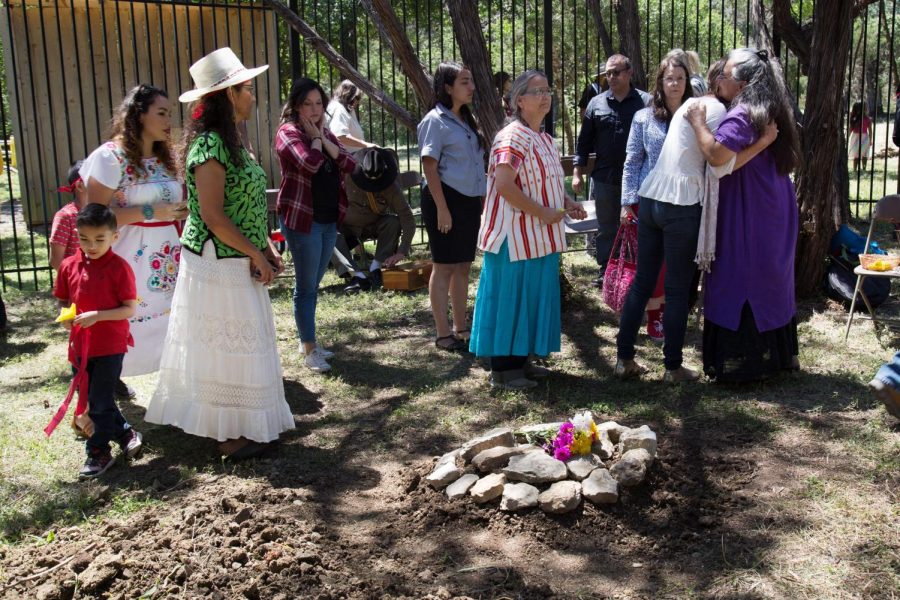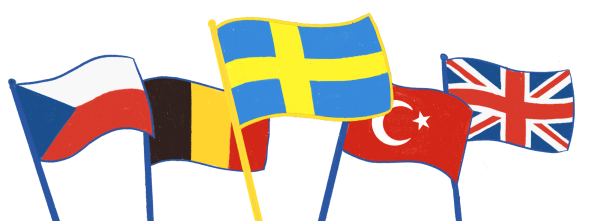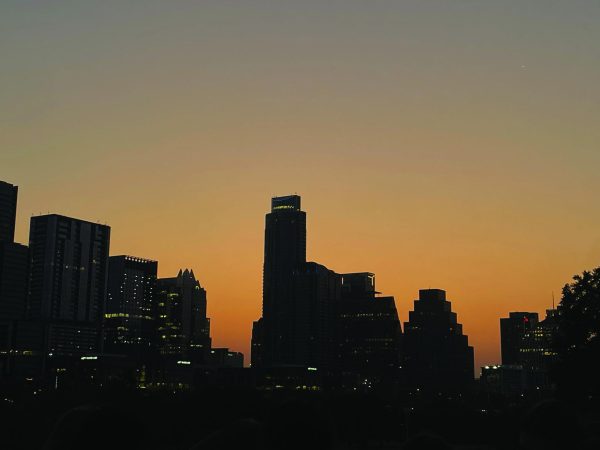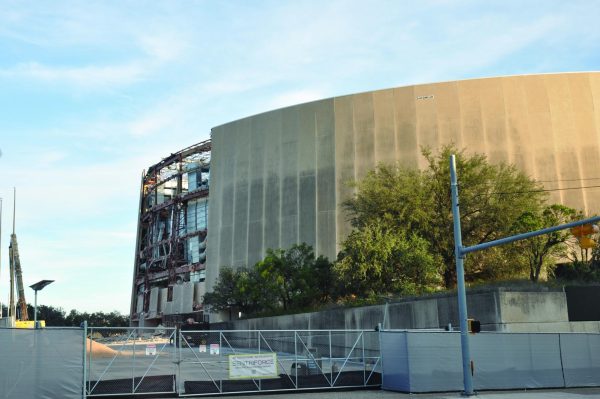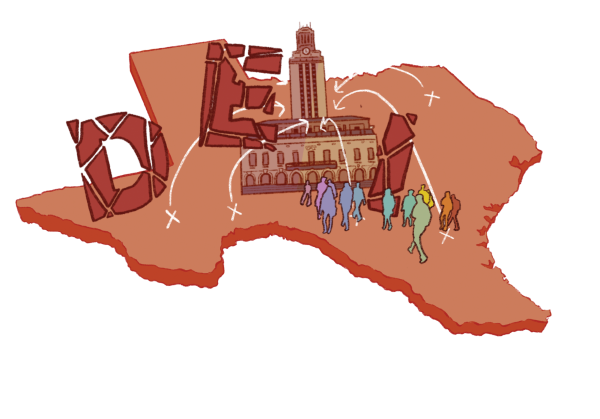Ancestral Remains Returned to the Miakan-Garza Band
November 15, 2020
For the last four years, the Miakan-Garza Band, an Indigenous group local to central Texas, has been asking the University of Texas at Austin to return unearthed ancestral remains. The remains were found and taken to the university when discovered buried underground in Hays County over 60 years ago, with a burial date of over 1,000 years ago. Since then, these remains have joined the university’s collection of Indigenous and historical artifacts which has grown to become the largest in the state.
Although the Miakan-Garza Band has been able to already reclaim multiple ancestors and artifacts from other institutions, it has been four years since they originally made their request to UT, which denied their request in June, claiming the remains were “culturally unidentifiable,” a label given to remains over 1,000 years old.
With this information, the Miakan-Garza Band held a teach-in and ceremony at the J.J. Pickle Research campus, praying for the ancestors to be reburied and educating attendees about the importance of repatriation. In September, UT’s previous statement was reversed by President Jay Hartzell, who said UT would begin the legal process of repatriation.
If all goes according to plan with the legal process of the Native American Graves Protection and Repatriation Act (NAGPRA), the remains will be returned. Juan Domingo, the communications representative for the Indigenous Cultures Institute, said they will then get a proper reburial near Spring Lake in San Marcos, Texas, where the remains will rest. According to Domingo, originally, ceremonies for repatriation did not exist, and were created because of colonialism and its effects.
“Spring Lake has big spiritual significance to me personally and also to the Miakan-Garza Band, and a lot of my indigenous relations here, in that I know it is one of the four sacred springs of these lands in what we call the Edwards Aquifer,” Domingo said. “‘Yana Wana’ is the spirit of the water in Coahuiltecan, and that is, essentially, a big source of life, so the springs here in San Marcos are the site of our creation story.”
According to NAGPRA, institutions holding remains are not legally required to consult with non-federally recognized tribes. This reason was used by UT to not initially meet with the Miakan-Garza Band, which is recognized on a state level but not federally. However, Maria Rocha, who is on the Board of Elders at the Indigenous Cultures Institute, said that just because the Miakan-Garza Band is not federally recognized does not mean that they do not qualify for reclaiming them. Rocha said the Miakan-Garza Band does not wish to become federally recognized.
“Many of our people do not want to play into the legitimacy game that the government plays with our people,” Rocha said. “We see this as a humiliating stamp of approval on our foreheads – Stamp! ‘You’re an Indian,’ Stamp! ‘You’re an Indian!’”
Rocha said the process of requesting to reclaim artifacts is not new to the Miakan-Garza Band. In the past 40 years, Dr. Mario Garza, the principal founder of the institute, has reburied almost 300 ancestral remains.
“Periodically, we request remains depending on various situations and circumstances,” Rocha said. “[For example], we were told that someone was digging up remains at Spring Lake, so Dr. Garza went to investigate. He found Texas State University archeologists and students exhuming our ancestor. Dr. Garza asked if he could stay and pray while they dug up our ancestor and they agreed. He prayed for five days as they carefully dug up our ancestor. We later requested this remain and went through the NAGPRA process and were granted the body which we reburied.”
According to Paul Figueroa, a professor at the University of New Mexico School of Law, many countries, such as in Latin America, are far ahead in the world of legislation for protecting Indigenous cultural creations than the U.S. or Europe. Figueroa said the main driver of NAGPRA was recognition that federally funded institutions such as universities or museums had remains belonging to Indigenous communities.
“They recognize that it was a result of the conquest and colonization in taking up their land, in taking other property,” Figueroa said. “Without saying that much, they basically admitted that it was cultural theft, right?…We go to museums in Europe, and we see African art, and it’s behind these beautiful window setups. It’s basically stolen art, and it’s a similar thing here that these educational institutions and museums were holding remains that oftentimes are sacred, and oftentimes have big significance to the tribes or are human remains, that should be given back to those communities.”
The Smithsonian’s International Repatriation Specialist Nancy Kenet Vickery also said that the act of reparation to tribes is important regardless of legalities and other factors. According to her, even though it’s a long ongoing process, it’s something museums and others should follow.
“I think it’s a great way to talk about righting past wrongs,” Vickery said. “It’s a dialogue. Repatriation is really quite a consultation process that we go through where it’s very important that we’re working in collaboration with [Indigenous] communities during this process from beginning to end, and it’s something I’ve appreciated about the museum not just in repatriation, but in other departments. Our Conservation Department, for example, does a wonderful job for community consultations to make sure that’s a very important part of the process.”
Domingo said it is important to be able to have the right to burial as it holds religious and spiritual importance to Indigenous peoples and is a right supposedly granted by the current colonial government. According to him, having to go through the legal process feels like being told Indigenous people are not worthy of burying their dead.
“[The ability to rebury] has been connected to this process and through the history of genocide and [our] status as second class citizens that a lot of people of color have experienced,” Domingo said. “[The ability to rebury] is just a part of that narrative, and we just need to build kinship with each other and listen to one another and know who truly has our backs and build community. In the end, it’s truly up to us to be accountable to each other versus asking for support or grace or anything from any type of colonial government.”

